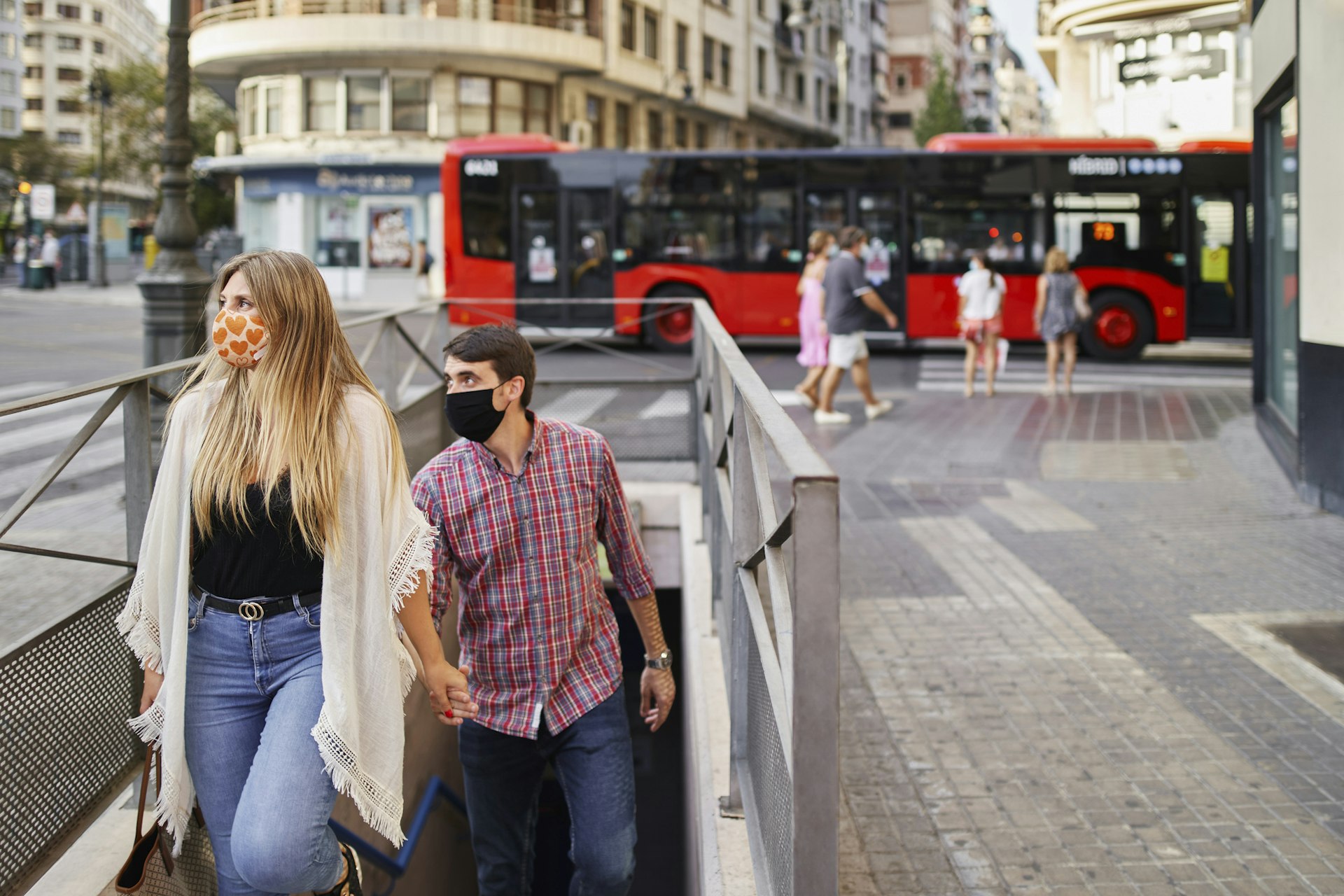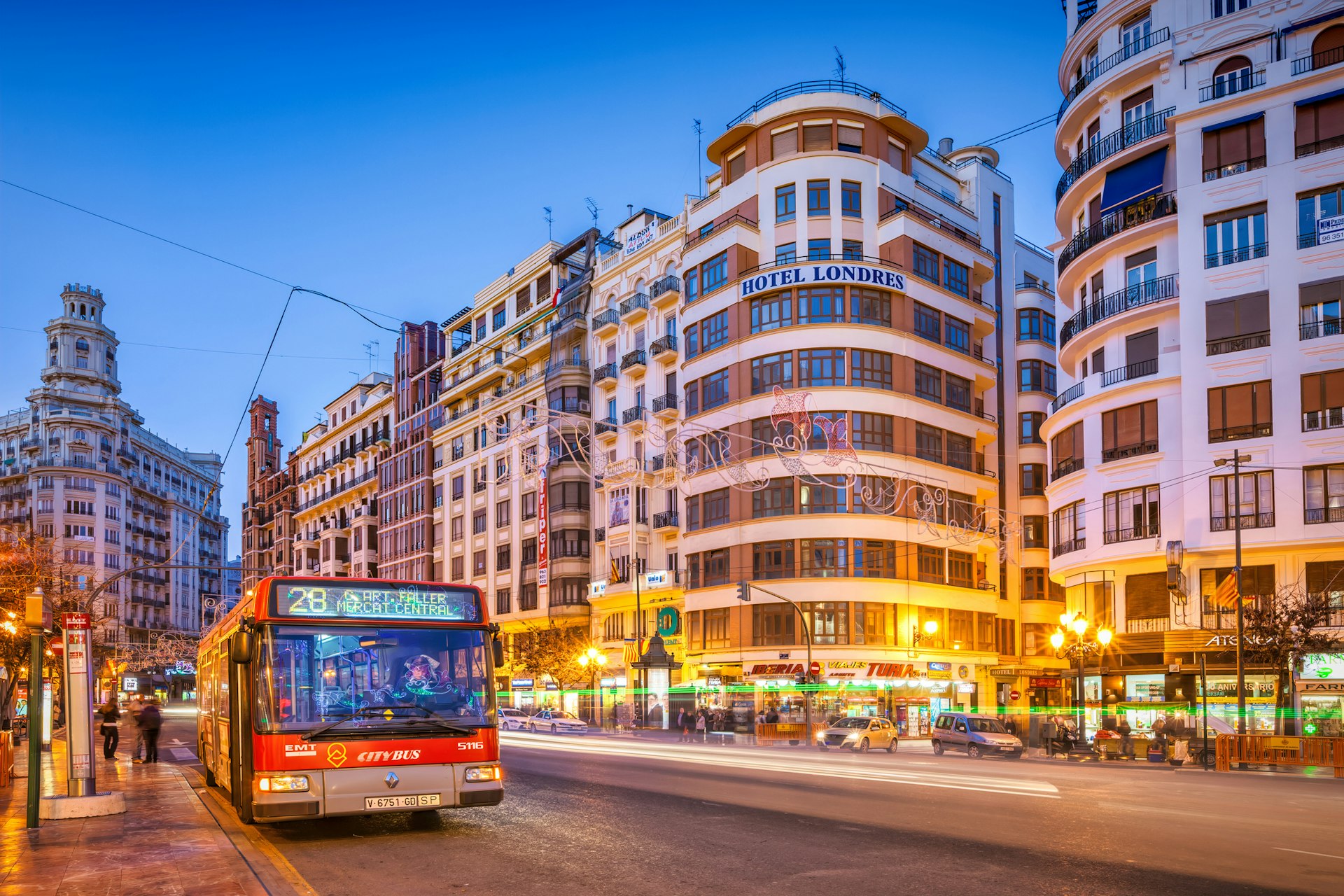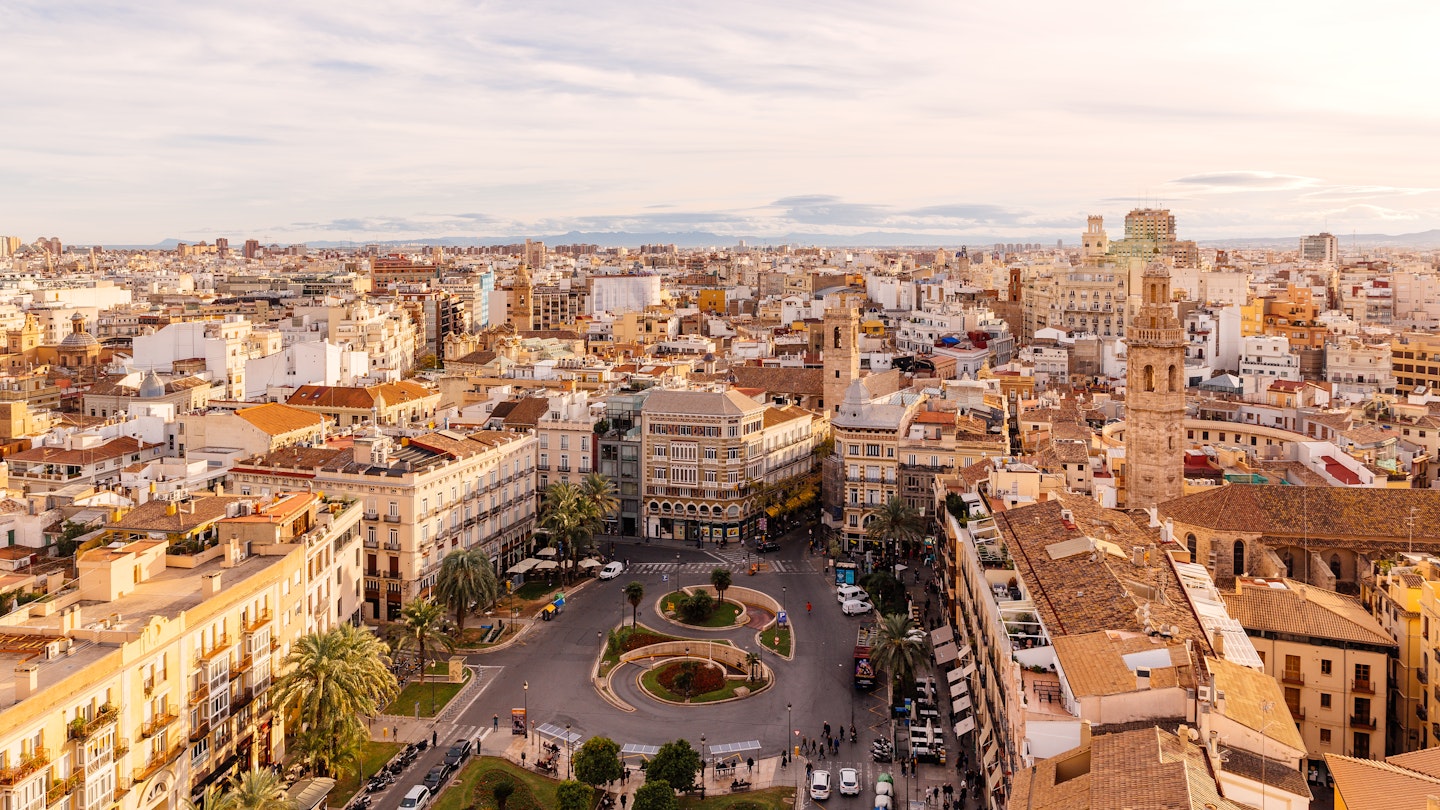Valencia may be Spain’s third-largest city, but it’s essentially very compact and walkable, and a lot easier to explore on foot than Madrid. Its old town center, the Ciutat Vella, is filled with a tangle of narrow alleyways, punctuated by orange-tree-filled plazas, magnificent churches and small tapas and paella restaurants.
To the north and the west, the city is encircled by an old dried-up riverbed, which has been transformed into the lush Jardines del Turia. Most of the main attractions lie within or around the Ciutat Vella, so if it’s your first time in the city you’re staying in the center, you’ll rarely need to use public transport, except when going to the futuristic Ciudad de las Artes y las Ciencias and the beaches.
Here’s how to get around in Valencia.

Metro
Valencia’s metro system is extensive, covering a large part of the metropolitan area. There are six lines in total, each one numbered and color-coded, making it very easy to use. The metro Valencia map is also very easy to follow, showing you which lines to take and where to change.
The system operates from 4am to 11pm on weekdays and from 5am to 12:30am on weekends. Trains arrive about every 10 minutes, and tickets can be bought from machines and ticket booths inside the metro stations themselves.
There are very few metro stops in the old Ciutat Vella, so you’ll mainly have to rely on getting around there on foot. If you’re staying outside the old center, the main stops closest to the central area are Colón, Àngel Guimerà and Pl. Espanya, while Túria and Alameda are the best for accessing either end of the long and winding Jardines del Turia. The metro stations also link up with the airport and Valencia’s two main train stations, Estación del Norte and Joaquín Sorolla.

Tram
There are three tram lines integrated into the metro system: lines 4, 6 and 8, which operate the same hours as the metro. The trams are modern and spacious, and you can use the multi-journey transport tickets on both methods of transport.
Like the metro, however, the tram lines don’t go through the Ciutat Vella. You are more likely to use them when going to the beaches and the old fisherman’s barrio of El Cabanyal. La Marina de València, Las Arenas and Eugenia Viñes are the best tram stops for accessing these areas.

Bus
The Valencia bus network covers a wide swath of the city center, as well as several outer-lying neighborhoods. Unlike the bus and tram networks, the city’s bus routes do run through the Ciutat Vella, making them a good option for those who can’t get around as easily on foot.
In 2019, Valencia launched 36 state-of-the art hybrid buses, and throughout 2021, the city has renewed its fleet with a further 164. Bus service runs from 4am to 10:30pm, and the night service operates between 10:30pm and 2am on weekdays, and 10:30pm and 3:30am on weekends.
The bus is also the best way to reach one of Valencia’s most famous attractions: the Ciudad de las Artes y las Ciencias. Bus numbers 95, 24 and 25 run from the edge of the city center to this huge complex in just half an hour.
The bus is also the best and fastest way to get from the Ciutat Vella straight to the beaches. Bus numbers 190A, 24 and 25 will take you closest to the old fishing quarter and the sea.
Top tip for navigating the Valencia transport network: Download the EMT Valencia app to find the best routes via bus, metro and tram.

On foot
Valencia is a very walkable city, and you’ll probably find that you get around more on foot than by public transport. It takes approximately 20 minutes to walk from one end of the Ciutat Vella to the other, where many of the main attractions are located.
The hipster neighborhood of Ruzafa and the shopping area of Gran Via lie just a 10-minute walk south of the Ciutat Vella. A good map or GPS is recommended, as the web of tiny alleyways in the center can get quite confusing.
Bike
Valencia is a great city for cyclists, with more than 156km (97 miles) of bike paths. One of the best places to cycle is along the 5.5-mile (9km) stretch of the Jardines del Turia, but many areas of the old center are traffic free too, so there's no need to worry if you’re not confident on two wheels.
If you’re staying for a week or longer, it's worth using the city’s public bike-hire scheme, Valenbisi, which has 2750 bicycles distributed around 275 stations throughout the city. There’s a weekly hire fee of €10, but the first 30 minutes of use is free; after that, it costs €1 for an extra 30 minutes up to one hour and then €3 for every extra hour you use it.
If you’re in the city for a shorter amount of time, there are several companies in the center that do half- or full-day bike rentals.
Accessible transportation in Valencia
Valencia is one of the easiest cities for accessible travel because of its easy-to-use transport system, most of which has been adapted for wheelchair use. Buses in Valencia are all wheelchair accessible, with electric ramps or low steps and special spaces inside to park.
With a few exceptions, most metro stations in Valencia are also wheelchair accessible, and the tiny gap between the train and the platform makes it easy for wheelchair users to embark and disembark. Like the bus and the metro, trams are also wheelchair accessible, and there’s plenty of space inside.
For more, see Lonely Planet's Accessible Travel Online Resources.
Transport Passes
If you’re only visiting for a few days and plan to use the metro infrequently, opt for a Bono metro Valencia ticket, which will give you 10 journeys in Zone A for €7.60 ($8.80).
If you’re going to be traveling around Valencia quite a bit and on various modes of transport, get an integrated Valencia public-transport ticket. A T-1 (€4/$4.65) provides unlimited journeys on the metro, trams and buses in Zone A for 24 hours, while the T-2 (€6.70/$7.80) provides the same for 48 hours and the T-3 (€9.70/$11.25) for 72 hours.
Those planning on staying in Valencia for awhile may want to get the Mobilis Card Valencia – a permanent metro ticket, either cardboard (€1/$1.15) or plastic (€2/$2.30), that can be topped up with credit and reused whenever you want.
Children under 10 travel for free on the metro as long as they’re accompanied by an adult. Only two children can travel for free with each adult transport ticket.
The Valencia Tourist Card is both a transport pass and a ticket, which gives you free entry at museums and attractions and discounts in certain shops and restaurants. It also allows you unlimited travel on all modes of transport. The ticket is available for 24, 48 or 72 hours and costs €15 ($17.50), €20 ($23.25) or €25 ($29) respectively.
You might also like:
The 12 top free things to do in Valencia
Valencia’s best beaches – get the morning sun before almost anywhere else in Spain
This Spanish city is the first to measure tourism's carbon footprint











